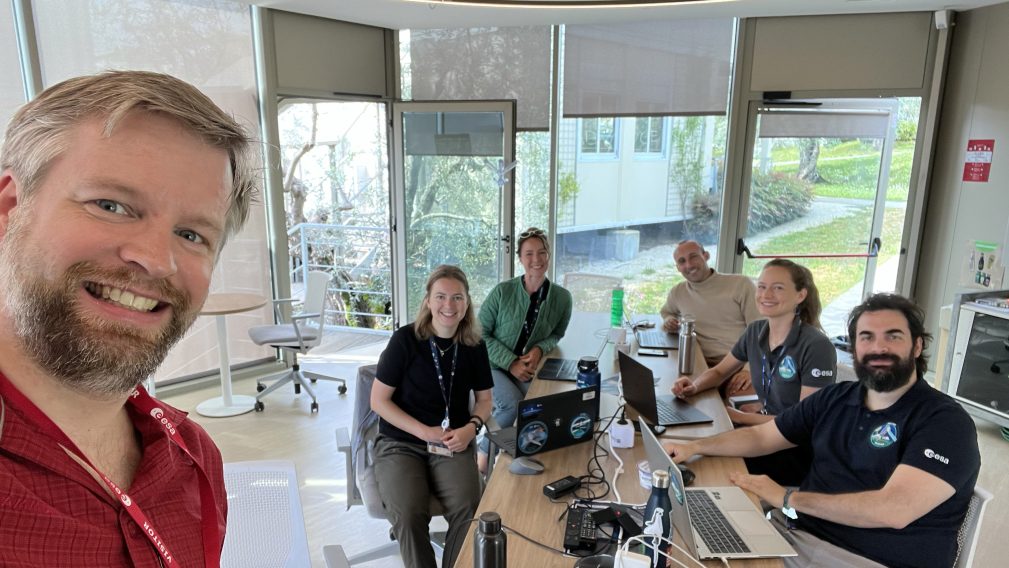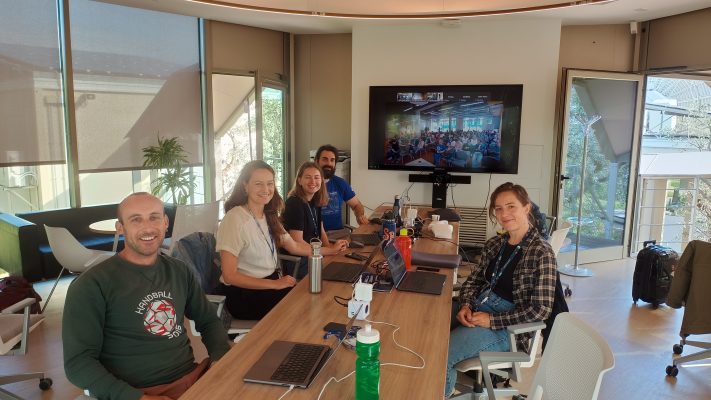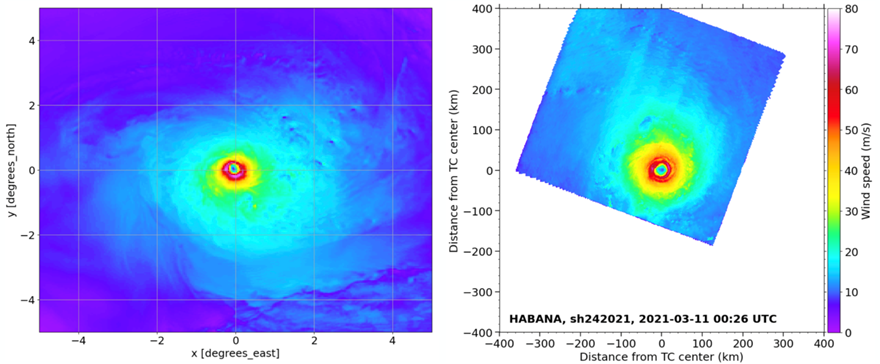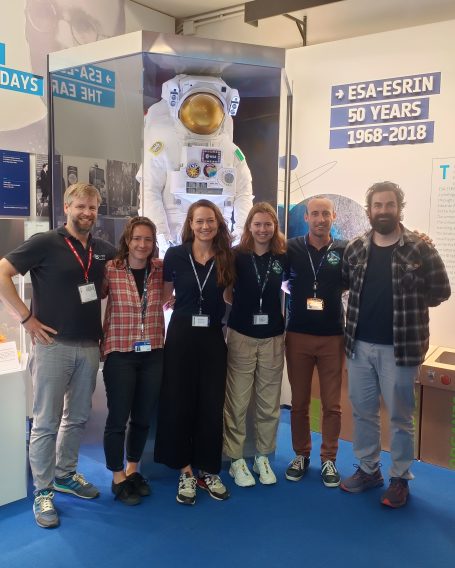From May 12–16, 2025, the European Space Agency (ESA) participated in the World Climate Research Programme (WCRP) Global KM-scale Hackathon, a global event that brought together the climate modelling community to accelerate research using climate simulations at unprecedented kilometre-scale resolution (horizontal resolution < 10 km). Hosted simultaneously across ten international nodes spanning nine time zones – including Hamburg, Oxford, Beijing, Tokyo, three US locations, Australia, and South America – the hackathon united more than 600 researchers around the data itself, fostering live collaboration, simultaneous analysis, and hands-on experimentation with new technologies.
ESA’s ESRIN centre participated as an affiliate node to the Hamburg node, operating as a cross-cutting activity, termed the “Joint Analysis with EarthCARE”, in which EarthCARE data was utilized to mimic analyses performed on the simulated data. This was achieved by forming joint teams with science teams working on diverse topics ranging from understanding the morphology of stratocumulus clouds in model and EarthCARE data to tracking and analysing tropical cyclones and haboobs (dust storms) found both in the simulations and along EarthCARE tracks.
The challenges to tackle during this hackathon were manifold. On one hand, the kilometre-scale model required a new approach to handling simulated data – from computation to data access and workflows. On the other hand, integrating EarthCARE data introduced the challenge of working across different temporal and spatial scales, raising questions about how to enable meaningful comparisons.
The ESA role
The ESA team comprised a multidisciplinary group of Earth observation scientists familiar both with the technicalities of the mission and data, as well as climate science expertise. The team included:
- Saskia Brose, Young Graduate Trainee (YGT) in EO Data Processing & Management
- Beniamino Abis, EarthCARE Level-2 Payload Data Ground Segment (PDGS) Engineer
- Johanna Mayer, Blanka Piskala, and Arthur Avenas, Internal Research Fellows (IRFs)
- Karsten Peters-von Gehlen, Research data management at the German Climate Computing Center (DKRZ).
Together, they embodied ESA’s dual mission for the hackathon: advancing scientific collaboration and evolving technical systems for data dissemination. More specifically, ESA’s involvement served multiple strategic goals:
- Scientifically, to connect the EarthCARE mission – ESA’s sixth EarthExplorer mission focused on clouds, aerosols, and radiation – with the broader climate modelling community, fostering mutual understanding and interoperability between satellite data and model simulations.
- Technically, to leverage the hackathon as an opportunity for the PDGS to immerse themselves in the workflows and needs of scientists, to inform the development of ESA Mission Analysis and Application Platform (MAAP), a next-generation, cloud-native collaborative environment for EO data access and analytics.
- And in alignment with the WCRP objectives, improving understanding of climate extremes, advancing process-level insights, and building infrastructure for cross-domain collaboration.
Projects and collaborations
Throughout the week, the ESA team worked with a range of science teams across nodes, each focused on unique Earth system phenomena.
ESA brought EarthCARE data and PDGS expertise to the table, contributing to the following scientific projects:
Looking ahead
The hackathon was a glimpse into the future of scientific collaboration. By participating in the global hackathon, the use of satellite data from EarthCARE was showcased to a broad modelling community, broadening the satellites impact, and collaborations were formed. Furthermore, technical systems like MAAP could be tested. Through initiatives like this ESA is supporting the groundwork for a digital research environment and bringing together scientific communities. By participating as a cross-cutting node, the ESA team had the privilege of witnessing and contributing to the way forward for climate research at km-scale resolutions.
Explore more about the event:
- WCRP Global KM-scale Hackathon on ESMO Website
- Hackathon Homepage (HK25)
- Unlocking the Power of Kilometer-Scale Climate Models: Hackathon Kicks Off to Tackle Next-Gen Earth System Science — ESMO Website
- Max-Planck-Institute for Meteorology: More than 100 scientists join the Hamburg node of the WCRP Global Km-Scale Hackathon
Featured image : The ESA team: Karsten Peters-von Gehlen, Saskia Brose, Blanka Piskala, Arthur Avenas, Johanna Mayer, and Beniamino Abis (left to right).







